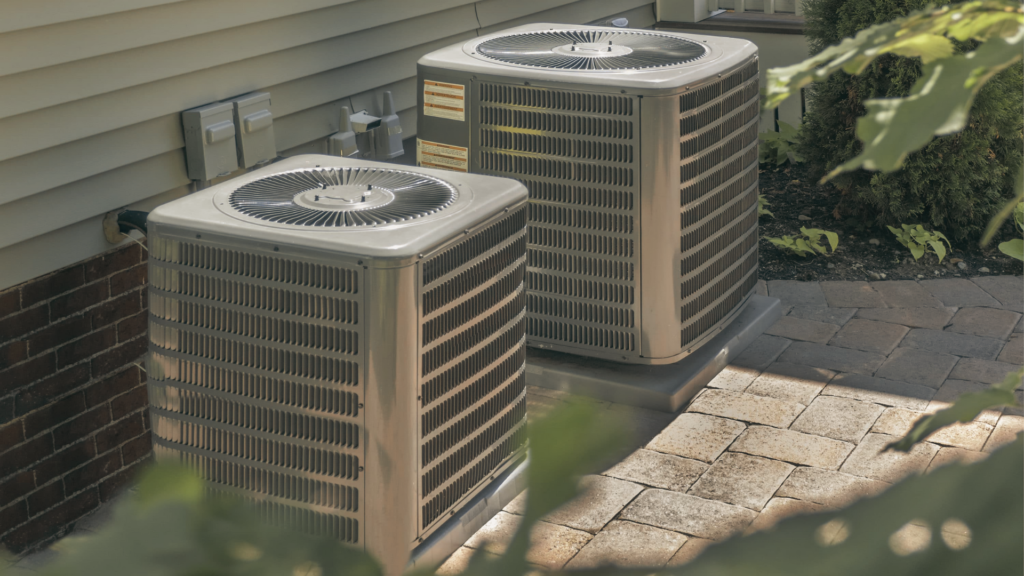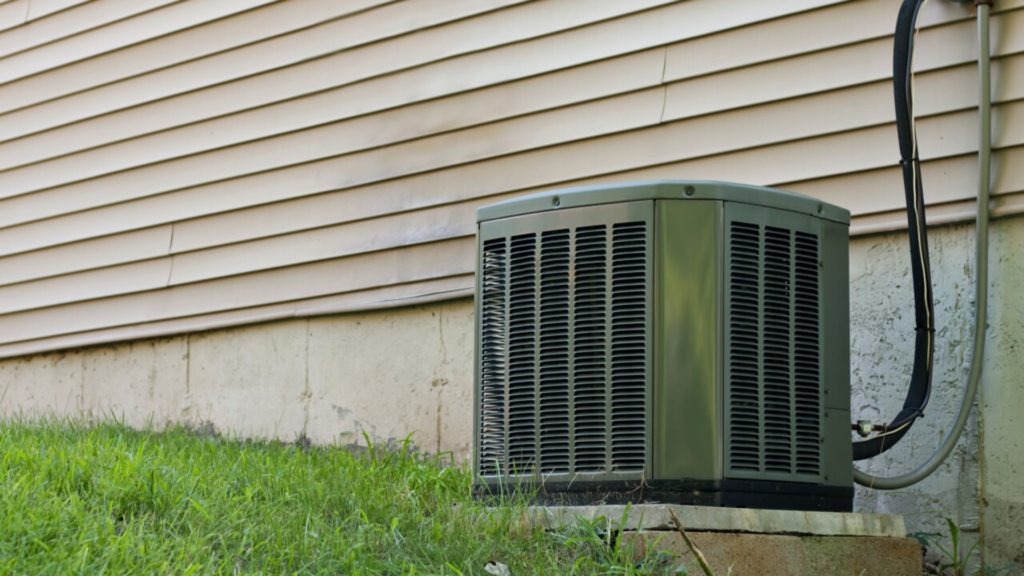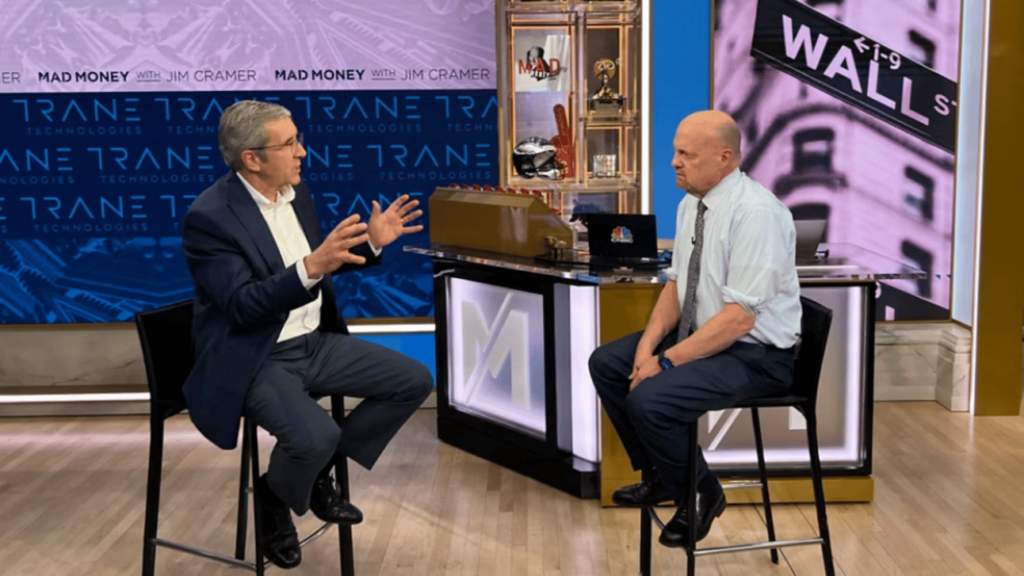A 30,000 foot view of the HVAC industry with Matt Michel
Notes on shipments, competing with PE, and consumer choice

❝
The replacement market today is driven largely by the shipments from 15 years earlier.
Matt Michel is an HVAC industry veteran — a speaker, writer, and founder and former president of Service Roundtable/Service Nation Alliance.
We sat down and talked about this year’s replacement market, equipment pricing, how independents can compete with PE, BBQ sauce (yes, BBQ sauce), and more. Our conversation’s been lightly edited for brevity and clarity.
How’d you end up in the HVAC industry?
I graduated from Texas A&M as a manufacturing engineer. [At that time], I got a directory of manufacturers from my hometown and mailed resumes to everybody that was in it. One called — located three miles from my parent's house — that was a refrigeration manufacturer.
I worked there for a couple of years and got to the point where I wanted more, and ended up getting hired by Lennox. My title was “Advanced Manufacturing Technology Engineer” — it took two lines on a business card. My job was to help automate the factories.
When did Service Roundtable come into play?
[Eventually], I got another call about an opportunity to start an air conditioning franchise organization. So I took it, started the Aire Serv franchise system, grew it to about 65 locations, and then the CEO passed away. It got very political and I high-tailed it out of there. I went to Decision Analyst, and it was there that I saw the need for something like Service Roundtable.
So we raised the money, launched in 2002, and sold the company fifteen years later to a PE-backed company.
What, specifically, was the need you saw?
I was doing work for several contractor alliances, and I noticed that their whole focus was on the most successful contractors. I also knew who the manufacturer dealer programs were focused on. Everything was focused on the top 5% — there was nothing for the majority of contractors, and those were the guys who needed help the most.
The internet was really just coming into play, and it represented, I thought, an opportunity for a low-cost per additional user model where people could self-serve online and we could communicate via email. That became the core of Service Roundtable. We had a plan from the beginning for a best practice group, and that became the Service Nation Alliance.
You talk about the replacement market being governed by shipments from 15 years ago. Can you tell me about that?
AHRI has a good dataset that rolls over the last twenty years and includes replacements, add-ons, and new construction. The replacement market today is driven largely by the shipments from 15 years earlier. Between 2005 and 2009, shipments dropped 40% — and you cannot replace what wasn’t installed.
We’re looking at a shipment cliff right now in the replacement market that started showing up in 2022, but it was masked by price increases. We had contractors doing fewer installations for more revenue because prices were so much higher. So fewer installs for more money with less labor meant record profits.
It really started slapping people last year. Contractors didn’t know what to do and private equity wasn’t expecting it. It’s gonna be a really interesting time in the industry, but we’re gonna come out the other side and there’s gonna be a 10-year run where every year will be better than the one before it.
Aside from that, what other big developments are impacting the industry?
The pricing of equipment is getting out of hand. The attitude of manufacturers on efficiency is, “Okay, it’ll cost us 15% more, we’ll charge 15% more, our revenue will go up 15% and we’ll get better bonuses, the stock will do better, and everybody’s happy.” But there’s nobody in this scenario who represents the consumer. And when we went from 10 to 13 SEER, in most of the country, the consumer got screwed because the additional cost of the equipment will never pay back in the equipment’s lifetime.
Now we have A2L refrigerants, which are problematic in a myriad of ways. Consumers are going to start bailing. They’ll spend $2,000 or $3,000 to replace a compressor instead of spending $18,000 to replace a system if they’re tight on money.
If there’s downward price pressure and it starts affecting margins, that’ll be interesting to see. Smaller contractors will do well because they have non-existent overhead; the larger contractors have more sales to spread their overhead across, but the guys in the middle are in a grow-or-die mode.
❝
The market is always right. When has central planning ever worked out better than consumer choice?
Why are A2Ls problematic?
First, everyone is expecting equipment pricing to jump 25%. That’s problematic enough. Since we’ve got two competing refrigerants, that means two more jugs to haul around and keep track of. And while I don’t know exactly what, there will be some unintended consequences. We’re gonna discover some.
On the IRA side, isn’t the point to help consumers — and save them money?
It’s a joke. There’s a means test so the people who can’t afford them in the first place are the ones who are gonna qualify [for rebates], or it’s gonna go to senior citizens who are retired and have lots of wealth, and we’re gonna be subsidizing seniors.
The tax credit renews every year which is something that will help, but again, we’re talking about systems that are gonna jump to $18,000 or $20,000 or more and you’re talking about a few thousand bucks. Meh.
Thoughts on electrification?
We’ve got places in Massachusetts where you can’t build new construction with gas anymore. So what happens? It’s winter, and you’re using your ultra-efficient heat pump, which is great, but where does the electricity come from? There’s a combustion turbine somewhere that’s 30% efficient converting gas to electricity. This is then wheeled down tens to hundreds of miles of transmission lines with step-down transformers and line losses all along the way.
If it gets really cold, we’ve got to go back to strip heat or resistant heat as backup, which is the equivalent of heating a home with a bank of blow dryers. And you’re comparing that to taking natural gas and piping it straight to the house where we convert 95% of it into heat. It makes no sense; it’s illogical.
Let the market work; the market is always right. When has central planning ever worked out better than consumer choice?
If you’re a contractor, what do you need to be thinking about today?
The first thing is making sure everything between my ears is correct. You gotta make a decision that we’re not gonna let any reductions in the replacement market hold us back. We’re gonna get better at and make money at service. We may go back to blocking and tackling — direct mail.
I’m gonna increase my advertising and marketing spend; I’m gonna get really involved in my community and encourage my managers to do the same. We’re all going to join different service clubs where we eat lunch every week with community centers of influence. We’re gonna have our name out there and we’re gonna build personal networks that will help drive business and drive sales. It’s back to fundamentals.
Grow your people, invest in your people, and always be recruiting. I think an independent contractor will have opportunities to pick up seasoned technicians from some of the PE companies. And I think the best plan is to grow your own labor force because you’re not bringing in anybody else’s bad habits. I’ve also known contractors who have had success recruiting from the police or the military.
How can independents compete with PE-backed companies?
[PE] can buy better… okay great. I can go join a buying group. They have cost savings from centralized dispatch, but the savings aren’t that great. And I can probably beat them by hiring the right people who can develop relationships over the phone and we can get smart about remembering and engaging customers.
What are the cost savings beyond that? There’s potential in training, but there are also resources available for independents. Equipment is a low-hanging fruit. They’re all gonna be using the same software — ServiceTitan — and I get it. But maybe I’ll use Housecall Pro and cut my software expense in half.
What they can do, if an owner’s paying themself really well, is reduce that by hiring a GM who works for a lot less. Okay, but if I’m an owner, I’ll spend 30% of my time talking to people and working on my recruiting. I don’t know that I’m at a huge disadvantage.
I noticed you placed 2nd in a BBQ sauce competition once. What’s that all about?
I started fooling around with cooking at one point and started making salsa. There was a regional fair and I entered some salsa and won. My wife’s response was, “Did anybody else enter?” So I entered into the state fair of Texas and won that and then again the next year. And I’ve won twice more after that.
I entered some BBQ sauces and the best I could ever get there was 2nd place, which really drives me insane because I’m stupidly competitive about stupid stuff. But the one thing I became a state champion in is cooking.
📬 Get our stories in your inbox
Keep reading
October HVAC shipments grow at highest rate in three years
The industry has staged a comeback from 2023, with a promising replacement backdrop heading into the next two years
February HVAC shipments snap 10-month growth streak
Shipments of central air conditioners and heat pumps fell slightly in February, breaking a 10-month growth streak, according to AHRI data
“We’re cautiously optimistic,” Trane CEO says about residential business
Trane reported Q2 earnings and shared its residential outlook


